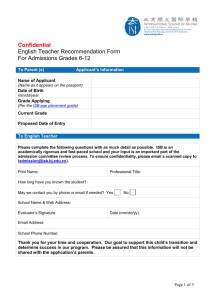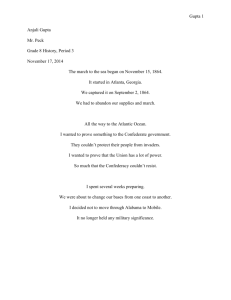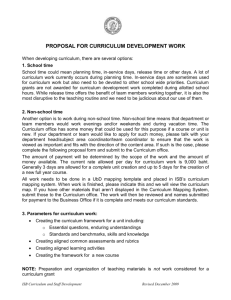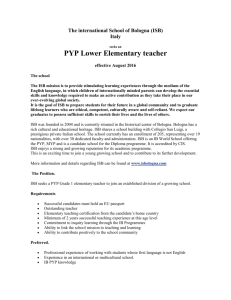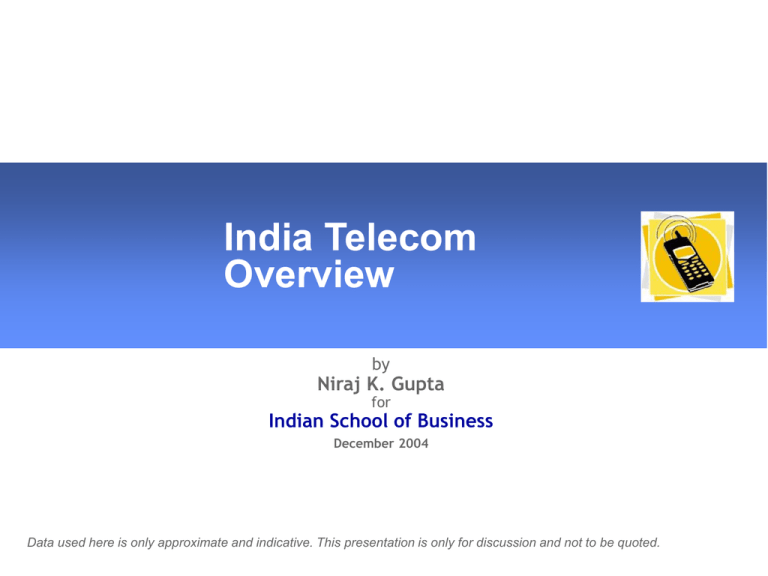
India Telecom
Overview
by
Niraj K. Gupta
for
Indian School of Business
December 2004
Data used here is only approximate and indicative. This presentation is only for discussion and not to be quoted.
Business of Telecom: 3 Pillars
Technology
Policy & Regulation
Presentation at ISB
December 2004
Business Strategy
2
© copyright 2004: Niraj K Gupta. All rights reserved.
Technology Hype: The Great Telecom Crash
t Chapter 11 filings Telecom
Banks and investors lent $1.3 trillion
to telecom companies since 1996…
most of which was lost
in Chapter 11 filings
Winstar Comm.
Worldcom
Trillions of Dollars lost
in market caps
Over half a million telecom jobs lost
PSI
Global Crossing
FLAG
360Networks
Presentation at ISB
December 2004
Teleglobe
3
many others…
© copyright 2004: Niraj K Gupta. All rights reserved.
Managing Technology: The 3G Hype
4G
WiMax
WCDMA
?
?
3G
over 100 billion US Dollars
paid in 3G licence fees
CDMA1xEV-DO
?
?
HANDSETS
availabilty
Content
Killer
Applications
Technology obsolescence => Need to recover invetment fast
Presentation at ISB
December 2004
4
© copyright 2004: Niraj K Gupta. All rights reserved.
Cellular Industry in
India
Presentation at ISB
December 2004
5
© copyright 2004: Niraj K Gupta. All rights reserved.
History
Phase 1 1994: cellular service licenses were first awarded 2 operators each in the four metro
cities of Mumbai, Calcutta, Chennai and Delhi => based on GSM technology
Phase 2 Licenses were awarded to 2 operators per telecom circle in rest of the country
=> based on the license fees quoted
Cellular companies committed to high license fees based on projections of future revenues, fell
far short of estimates => most operators unable to meet their license fee obligations
July 1999: the license fee structure changed to a one-time entry fee and a revenue share
arrangement. Simultaneously the maximum tariff allowed was reduced significantly
=> market has continually grown ever since
January 2001: fixed line (CDMA technology-) providers allowed to provide limited mobility
services => no roaming
Phase 3 March 2001: Government owned operators - BSNL and MTNL - entered the market as
the third cellular mobile operator
Phase 4 July 2001, 4th GSM license was awarded in various circles
Recently, wireline (CDMA technology-) operators allowed to provide full mobility and
move towards a unified license i.e., fixed+mobile access services can be provided using one
license
Presentation at ISB
December 2004
6
© copyright 2004: Niraj K Gupta. All rights reserved.
Telecom Indicators
now
Telecom Services Revenue (2003)
Fixed Telephone Lines (Dec’03)
Fixed Line Growth – CAGR (1997-2003)
Wireless Subscribers (Jan’ 04)
Wireless Growth – CAGR (1997-2003)
Public Payphones
Teledensity (2003)
Internet Users (2002)
Internet Subscribers (June’03)
TV Households (2002E)
Cable TV Subscribers (2002E)
US$ 10.9 Billion
42.5 Million
15.6% per annum
29.9 Million
77.0% per annum
1.1 Million
7.0 per 100
16.6 Million
3.77 Million
78 Million
40 Million
$12.25 billion (2003-04)
=> now 44 M Oct 2004
now very small
=> now 44.5 M Oct 2004
now 100%
now over 8%
Mobile subs 44.51M
Fixed 43.96M44M
(Oct04)
Source : International Telecommunication Union; Analyst Reports
Presentation at ISB
December 2004
7
© copyright 2004: Niraj K Gupta. All rights reserved.
Telecom Scenario Analysis
2003-04
India´s communications industry
Tele-density:
7.12 on 31 March 2004
5.35 on 31 March 2003
Revenue
FY 2003–04 Rs 56,367 crore ($12.25 billion)
FY 2002–03 Rs 47,121 crore ($10.24 billion)
Growth
20 %
5%
Cellular services:
- The cellular grew by around 72% in revenue terms and 135% in terms of subscribers.
- The star => will continue to grow fast for few years.
- contributed more than a quarter of the overall revenues.
Key factors for excellent growth:
- low pricing and the
- calling-party pays (CPP) regime.
If low tariffs continue, India will overtake other giants on the numbers front
Quality of service (QoS) is still far below TRAI´s benchmark.
Source: DoT, TRAI, V&D and other media.
Presentation at ISB
December 2004
8
© copyright 2004: Niraj K Gupta. All rights reserved.
Telecom Indicators: Targets
Dec 2007
Mobile
Fixed
175 mn
75 mn
250 million
Oct 2004
Additions by
2007
Monthly
additions
required
Today’s level
Mobile
Fixed
44.5 mn
44 mn
161.5 mn
Mobile
&
Fixed
Over 4 mn
~ 2 mn
Source: Association of Unified Telecom Service Providers of India
3rd Dec 2004
Presentation at ISB
December 2004
9
© copyright 2004: Niraj K Gupta. All rights reserved.
Mobile
Dec 2007 fcst=> 175 Mln
TRAI expects to achieve this growth rate since the current mobile network coverage in India is only 20% of the
population but this coverage is likely to increase to 75%, as shown, in next two years.
Presentation at ISB
December 2004
10
© copyright 2004: Niraj K Gupta. All rights reserved.
Cellular Telephony
Mobile subs 44.51M
(Oct04)
Source: COAI, ABTO, TRAI, V&D
Presentation at ISB
December 2004
11
© copyright 2004: Niraj K Gupta. All rights reserved.
Cellular industry growth
29.9*
Subscriber base (Million)
20.00
15.00
400%
300%
12.7
10.00
200%
6.4
5.00
0.00
100%
3.6
0.1
0.4
0.9
1.9
1.2
0%
Mar-96 Mar-97 Mar-98 Mar-99 Mar-00 Mar-01 Mar-02 Mar-03
Subscribers (millions)
Jan-04
Annualised Growth rate
* January 2004 subscribers includes both GSM and CDMA subscribers
Mobile subs 44.51M
Fixed 43.96M
(Oct04)
(Source: Cellular Operators Association of India
and Association of Basic Telecom Operators )
Since the shift in the license fee structure in July 1999 the industry has been growing at a
high rate
Presentation at ISB
December 2004
12
© copyright 2004: Niraj K Gupta. All rights reserved.
India is amongst the fastest
growing wireless markets
206.6 140.8
120%
2001-02 >> 98.0% 100%
81.1
80
60.0
60
40
80%
53.0
49.7
60%
43.0%
38.6
34.8
25.9
21.0%
11.0%19.0% 12.7
32.3
20
10.0% 8.0% 7.0%
3.0%
7.0%
7.0%
20%
India
Mexico
Korea
Brazil
France
UK
Italy
Germany
Japan
USA
0%
China
0
40%
Growth YoY 2001-02
Subscribers-Million ( December 02)
100
(Source: International Telecommunication Union)
As of January 2004, the wireless subscribers in India were approximately 30
Million showing an annual growth rate of 120% over the last 12 months
Presentation at ISB
December 2004
13
© copyright 2004: Niraj K Gupta. All rights reserved.
Mobile Growth: Milestones
Source: TRAI
Presentation at ISB
December 2004
14
© copyright 2004: Niraj K Gupta. All rights reserved.
Mobile Penetration
65.5%
60%
Source ITU
43.7%
40%
2002
32.0%
21.0%
20%
18.3%
6.2%
1.8%
0%
Korea
Malaysia
T hailand Philippines
China
Indonesia
India
Countries like Japan, China, Brazil, South
Korea and Mexico have more mobiles than
fixed lines.
Czech Republic: 96.5% (mobile subs 9.75 M
=> thrice of fixed lines).
Spain: 91.6% (mobile subs 37.5 M => twice
of fixed lines).
Taiwan: 111% (25 million subs).
China : 21.4 %
India : 4% => now growing at about 2
million new subscribers every month.
Source: TRAI
The wireless penetration has since increased to over 3% as in January 2004 with wireless forming
40% of the total telecom subscribers=> crossed fixed in Oct 2004
Presentation at ISB
December 2004
15
© copyright 2004: Niraj K Gupta. All rights reserved.
Mobile 2003-04
Top Mobile Service Providers in Terms of Revenue (FY 2003–04)
Rank
1
2
3
4
5
6
7
8
9
10
11
12
13
14
Company/Group
Bharti Tele-Ventures
Hutch Group
Reliance Group
BSNL
Idea Cellular
BPL Group
Spice
Aircel*
Escotel#
Tata Teleservices Group
MTNL
Hexacom**
HFCL Infotel
Shyam Telelink
Reliance Infocomm made history by getting a
subscriber base of 6.9 million subscribers
taking the overall tally of its cellular subscribers
to 7.2 million.
Reliance Group #1 in numbers,
Bharti #1 player in revenue (Rs 3,261 crore).
Hutch increased its service areas.
*Includes RPG Cellular revenues
#Escotel has been bought over by Idea and from FY 2004–05 it will have a combined turnover
**Hexacom has been bought over by Bharti and from FY 2004–05 it will have a combined turnover Group
revenues include GSM as well as CDMA services revenues, wherever applicable
The Subscriber Surge:
Mobile subscribers swelled from 14 mln in March03 to 33 mln in March04 => 135% explosive growth
Presentation at ISB
December 2004
16
© copyright 2004: Niraj K Gupta. All rights reserved.
Mobile Market Shares 2003-04
Top 5 => 80%
of Rev
Presentation at ISB
December 2004
17
© copyright 2004: Niraj K Gupta. All rights reserved.
Mobile Subs Oct 2004
GSM
Cellular
Fixed
CDMA (F
+ Mob)
No. of
Subs.
Wireline
WLL F
Mobile
Bharti
9062K
BSNL
7941K
Hutch
6566K
Idea
4419K
BPL
2402K
Aircel
1512K
Spice
1457K
Reliance
964K
MTNL
442K
Total
Presentation at ISB
December 2004
34770K
Total No.
of Subs.
Reliance
27
984
8387
9399K
Tata Tele
390
1336
657
2384K
Bharti
749
27
-
776K
HFCL
127
40
45
213K
Shyam
94
21
26
141K
1388
2409
9116
12914K
Total
18
© copyright 2004: Niraj K Gupta. All rights reserved.
ARPU
Average Revenue Per User (ARPU) of cellular consistently declining over the past few years due
to quest for quick subscriber growth
58 % down from 2001 to Rs 469 in 2004.
Reasons for steep decline:
- Entry of CDMA players intensifying competition in the mobile communication space.
increasing pressure on voice tariffs (voice 90% of the traffic)
- Dominance of the pre-paid user.
Prepaid Vs. Postpaid:
- TRAI July 2004 data: almost 75% of GSM subscribers are pre-paid (which has seen the most rapid growth in
the past 5 years).
- Growth: While the pre-paid segment has grown by almost 27 times, post paid has growth of just 5.4 times.
- Tata Teleservices had highest ARPU, at Rs 650, with is largely post-paid mobile subscriber base.
- Among the GSM-only operators, Hutch has the highest ARPU in the industry, at around Rs 534.
In its stronghold Mumbai (higher incidence of post-paid customers) the ARPU was as high as Rs 608.
- State-run BSNL and MTNL have lower ARPUs :
Less applications => less non-voice usage.
BSNL had a large subs base in the B- and C-class cities where even the voice usage is relatively low.
Presentation at ISB
December 2004
19
© copyright 2004: Niraj K Gupta. All rights reserved.
Wireless Data
SMS services have been very successful in India in line with the trends in rest of the of
the World
SMS accounts for approximately 3-5% of the total wireless revenues
GPRS/EDGE services have been launched in India
Data services offered by operators are
E-Mail, instant and group messaging, MMS
Downloads
Internet access, Internet chat
Mobile banking
Fax and data services
Web directory access through SMS
Information services such as news, stock quotes, airline and train schedules,
cricket scores and horoscopes
Games
Presentation at ISB
December 2004
20
© copyright 2004: Niraj K Gupta. All rights reserved.
Spectrum
Spectrum allocation
for 2/2.5 G cellular mobile services
800 MHz International allocation* 824–849 MHz paired with 869–894 MHz
Indian allocation 824–844 paired with 869–889 MHz (Used to provide WLL (M) and CDMA-based mobile
services)
900 MHz International allocation* 890–915 MHz paired with 935–960 MHz (880–890 MHz paired with 925–935 MHz E-GSM
band)
Indian allocation 890–915 paired with 935–960 MHz** (Used by 1st, 2nd, and 3rd cellular operators for GSM)
1800 MHz International allocation* 1710–1785 MHz paired with 1805–1880 MHz
Indian Allocation 1710–1785 Mhz paired with 1805–1880 MHz (Used by 4th CMSP and for additional allocations
to 1st, 2nd, and 3rd CMSPs)
1900 MHz International allocation* 1850–1910 MHz paired with 1930–1990 MHz (North American PCS band)
Indian allocation 1880–1900 MHz is earmarked for micro cellular technologies based on TDD
*SOURCE: ITU-R Recommendation M.1073-1 & NFAP 2002 / TRAI Consultation Paper
Presentation at ISB
December 2004
21
© copyright 2004: Niraj K Gupta. All rights reserved.
Spectrum
GSM:900MHz to start with
metros
after 600K subs entitled for additional=>
after 1 mln sub entitled for additional=>
6.2 MHz
+1.8 MHz
8.0 MHz
+1.8 MHz
9.8 MHz
Examples:
Delhi:
Bharti 1.5 mln subs => 10 MHz
idea now 600K
=> applied for next 1.8 MHZ
after 9.8 Hz, given in 1800 MHz band
CDMA:
given 5.5 MHz 800 Mhz band => enough for over 1 mln subs
Presentation at ISB
December 2004
22
© copyright 2004: Niraj K Gupta. All rights reserved.
Spectrum
SPECTRUM POLICY TO ADDRESS 1900 MHZ BAND ALLOCATION ISSUE
Telecom Regulatory Authority of India “the spectrum policy to be announced this month will address the
controversy between GSM and CDMA operators over allocation of radio frequency for third generation
services (3G) services in the 1900 Mhz band. The policy on 3G has to be evolved with caution while at the
same time building flexibility in allocation offrequency and making it affordable. The policies would have to
be dictated by standards laid down by the International Telecommunications Union (ITU) and the
availability of equipment”.
Both CDMA and GSM operators have been clamouring for the 1900 Mhz spectrum.
While GSM operators say that allowing CDMA services in 1900 Mhz would create interference in their
cellular network, GSM operators are also opposing the entry of CDMA players in the 1900 Mhz on grounds
that internationally the band has been reserved for thirdgeneration services.
CDMA players say that there is no equipment available for any other frequency. On the other hand, CDMA
operators highlight the fact that globally there are only two other countries where CDMA networks
arerunning on frequencies other than the 1900 Mhz band.
Presentation at ISB
December 2004
23
© copyright 2004: Niraj K Gupta. All rights reserved.
Spectrum
DoT MAY DELICENSE MORE FREQUENCY BANDS TO PUSH BROADBAND
To accelerate the penetration of broadband and internet, Department of Telecom is planning
to delicense certain spectrum frequency bands.
"With a view to accelerating penetration of broadband and Internet, the 5.15-5.35 Ghz band
is also being delicensed for the indoor use of lowpower Wi-Fi systems.
For outdoor use, the band of 5.25-5.35 is under active consideration for delicensing in
consultation with the existing operators in the band" - Nripendra Misra, chairman, Telecom
Commission.
He said alternative spectrum frequency bands which are not in high use for other
applications could also be deployed for broadband services. The process of siting clearance
by the clearing agency SACFA as also the grant of wireless licences has been simplified to
some extent and further simplification is on the anvil. A transparent scheme is being outlined
separately for time-bound frequency as well as siting clearance and wireless licensing by
removing the cumbersome procedure.
2.4 GHz band already free band
for WiFi
Presentation at ISB
December 2004
24
© copyright 2004: Niraj K Gupta. All rights reserved.
Brand Rankings
This year’s 2004 telecom services brand ranking
1 BSNL (usurping the top spot from last year’s leader Reliance IndiaMobile)
2 Reliance
3 Airtel (# 3 in 2003 too)
4 Tata Indicom (# 4 spot belonged to BPL Mobile in 2003)
5 BPL (??)
6 Hutch inches up one rank taking over # 6 position from MTNL
7 MTNL
8 Idea (# 8 in 2003 too)
Overall services list: three out of the top 10 service brands are telecom brands (last year there were two)
3 BSNL (late entrant into the mobile telephony market)
6 Reliance India Mobile (last year # 3)
7 Airtel (# 15 last year, Airtel could well be on its way into the top five next year)
20 Hutch (Orange in Mumbai- has seen the highest ascent in its category, and overall, jumping 14 places
from No. 34 to No. 20 this year)
Source: The Economic Times 15 Dec 2004 RINGING IN A NEW ORDER
Presentation at ISB
December 2004
25
© copyright 2004: Niraj K Gupta. All rights reserved.
Growth factors in the Indian market
Overall growth of the Indian economy and increasing demand for telecom services
Increased competition – driving down tariffs
Decline in tariffs – for both wireless and long distance services
Reduction in prices of the handsets (In India, operators have not been subsidising sales of
handsets)
Prices of handsets has reduced from US$ 1,140 – 1,430 in 1995 to as low as US$ 60 – 80
Introduction of pre-paid services – estimated to account for over 60% of the market
Productive tool/security: Increasing familiarity with the utility of mobile services
Presentation at ISB
December 2004
26
© copyright 2004: Niraj K Gupta. All rights reserved.
Technology trends: 3G
Wideband CDMA (WCDMA) is an approved 3G standard that uses 5 MHz channels for both voice and data, offering
excellent voice capacity and a peak data rate of 384 kbps. NTT DoCoMo launched the first WCDMA service in 2001 and
now has millions of 3G subscribers.
WCDMA (UMTS) is also the 3G technology of choice for many GSM/GPRS operators, with dozens currently trialing the
technology and more than 100 having licensed new spectrum with the intent to launch services in the next few years.
Presentation at ISB
December 2004
27
© copyright 2004: Niraj K Gupta. All rights reserved.
Telecom FDI
RS 41,000 CRORE TELECOM FDI PROPOSALS CLEARED IN 13 YEARS
In the telecom sector since 1991 (total of 930 FDI proposals) between August 1991 and
September 2004.
Number of proposals Delhi (208), Maharashtra (134), followed by Karnataka with 63 and Tamil
Nadu with 53.
'INDIA NEEDS $70 BN FOR TELECOM GROWTH’
The Indian telecom industry will require about $70 billion in the next couple of years to achieve
new target of 250 million subscribers by 2007-08 (against present 85 million).
As the second largest telecom market in the world after China, India has also emerged as one of the fastest
growing markets, adding around two million fixed-cum-mobile phones per month.
The government allowed 49 percent FDI (foreign direct investment) in the telecom sector, only $2 billion had
come through the FDI route so far.
There is demand for increasing the FDI limit to 74 percent => being considered by the present government.
Presentation at ISB
December 2004
28
© copyright 2004: Niraj K Gupta. All rights reserved.
Long distance
Telecom Scenario Analysis
2003-04
LD continued southward in FY 2003–04 too. From a negative growth of about 20% in FY 2002–03, it has
come down to about 14 percent.
NLD National
Large infrastructure of about 572,675 Rkm .
=> need to promote broadband services (triple-play).
ILD International
DATA: good growth in data => growth est 65%.
VOICE: good growth in voice minutes 22 percent,
but a drop in prices led to fall in revenues
Presentation at ISB
December 2004
29
© copyright 2004: Niraj K Gupta. All rights reserved.
Thanks !
http://www.telecombynirajgupta.com
.com
gupta_niraj@hotmail.com
Presentation at ISB
December 2004
30
© copyright 2004: Niraj K Gupta. All rights reserved.

